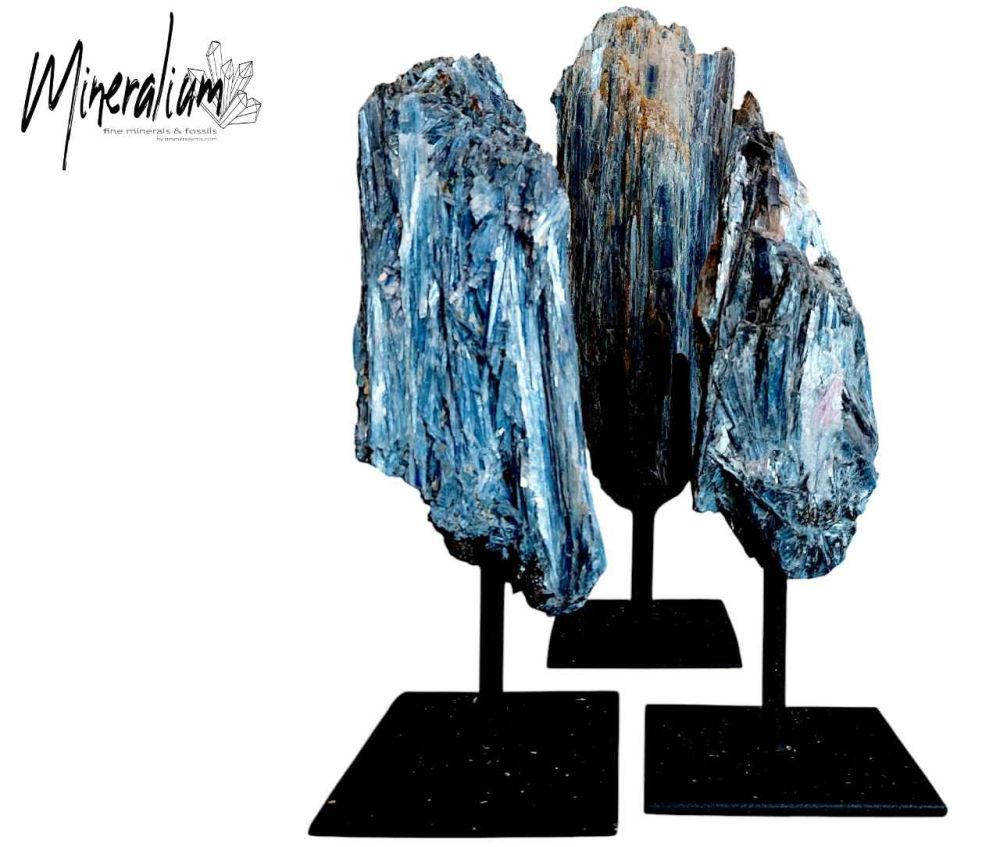We use cookies to make your experience better.
TimmersGems has a new website, existing customers also need to register again.
Blue kyanite (1-4 kg) in top quality from Araçuia, Minas Gerais, Brazil.
Super beautiful and intense blue kyanite… “Only the most beautiful go on standard”, very beautiful pieces.
Availability:
In stock
SKU
122263
- Buy 20 for €59.00 each and save 14%
Blue kyanite (1-4 kg) in top quality from Araçuia, Minas Gerais, Brazil. is available to buy in increments of 5
The mineral kyanite, or disthene, is an aluminium silicate with the chemical formula Al₂SiO₅. It belongs to the group of nesosilicates. The blue, grey, white, green or black mineral has a perfect cleavage according to the crystal plane [100], a white stripe colour and a glass-to-pearl lustre. The crystal system is triclinic, the average density is 3.61 and the hardness is 4 to 7. Kyanite is neither magnetic nor radioactive. The name of the mineral kyanite is derived from the Greek word kyanos, which means "blue". Kyanite is a very common mineral as a component of many rocks. It occurs, among other things, in metamorphosed sedimentary rocks. It is also, together with the other aluminium silicates sillimanite and andalusite, an indicative mineral for the depth and temperature at which a rock has undergone metamorphism. Kyanite is usually stable at temperatures below 650 °C and at pressures above 0.3 GPa (gigapascal). The pressure and temperature are related, so that at high pressure (0.6 GPa), a higher temperature (600 °C) is required to form sillimanite from kyanite. At pressures below 0.3 GPa, andalusite is the stable aluminium silicate. Gemstone-quality kyanites are found in India, in the gemstone deposits of Myanmar and Korea. In the United States, kyanites are mined in California, Tennessee, Georgia, New Hampshire and North Carolina. In Africa, kyanite occurs in Kenya and Tanzania and in Europe in Russia, Switzerland, Austria and France. Kyanite occurs in the sand fraction of Dutch Quaternary river sediments. In the heavy mineral analysis, which took place in the Netherlands at the National Geological Service during the second half of the twentieth century, the mineral is classified in the so-called stable group. This research solely employs the name disthene.
| Dimensions | 1-4 kilo |
|---|---|
| Country of Manufacture | Brazil |












